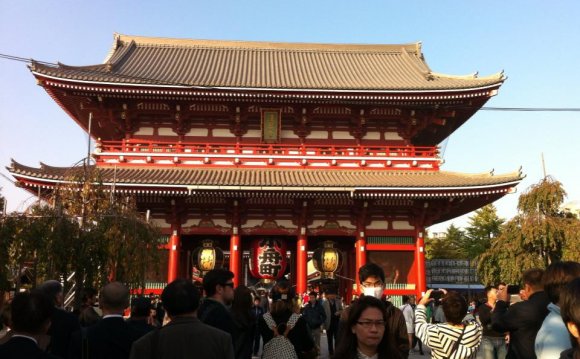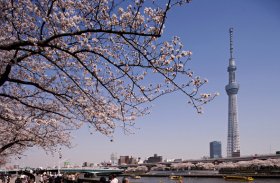
 From the 634-metre-high Tokyo Sky Tree and the miniature deer on Miyajima Island, to Kyoto’s Sake Making Museum and the sombre Peace Memorial Museum, Contiki’s fully-inclusive activities ensure you delve deep into Japan.
From the 634-metre-high Tokyo Sky Tree and the miniature deer on Miyajima Island, to Kyoto’s Sake Making Museum and the sombre Peace Memorial Museum, Contiki’s fully-inclusive activities ensure you delve deep into Japan.
However, it’s the tour company’s ‘Me Time’ optional experiences that can add a little Harajuku colour to your trip. For an additional cost you can embrace artificial intelligence with dinner at Tokyo’s Robot Restaurant, or cleanse your body in a traditional Japanese hot-spring bath.
To be fair, we’ve only grazed the surface on the happenings along Contiki’s new tour, which has instilled a sense of whimsy around the office, inspiring more than a few Japan-specific haiku. Check them out below:
………………………………………………………………………………………………………………………………………
 A city of masks,
A city of masks,
coloured by mother and child.
Wrap steel in flowers.
………………………………………………………………………………………………………………………………………
Man’s boundless carriage
reveals Fuji’s splendid coat.
Rural map below.
………………………………………………………………………………………………………………………………………
Peace in nobleness.
Grace behind face painted white.
Tradition upheld.
………………………………………………………………………………………………………………………………………
Sleepless cities drink,
and nomads find home returned.
Japan wakes to you.
………………………………………………………………………………………………………………………………………
 Write Your Own Haiku
Write Your Own Haiku
So which is easier: Writing haiku or touring Japan with Contiki? You can attempt the latter by contacting your Flight Centre travel consultant or the former with these ten haiku tips sourced from the experts.
- Haiku structure – Although Japanese haiku is traditionally three lines of five syllables, seven syllables and five syllables, modern English haiku can be of any length.
- Focus on a subject – You only have limited space, so choose one subject and capture its external properties while avoiding interior opinions. Allow the reader space to see what you see and to create their own mindsets.
- Juxtapose for depth – An easy way to create deeper meaning in your haiku is to include two opposing perspectives on your subject. One line may reveal the beauty of a place, while the next might draw from its ugliness.
- Write from the senses – The best haiku include one or more of our sensory observations (touch, taste, smell etc.).
 When writing about your subject, explore the various sensory observations that can bring it to life for the reader.
When writing about your subject, explore the various sensory observations that can bring it to life for the reader. - Research more than imagine – Personal experience and memories are better bases to write haiku from than imagination. Haiku require plenty of descriptive elements (see tip #4) to make them authentic.
- Avoid rhyme and rhetorical devices – Haiku typically never have rhyme or rhetorical devices such as metaphor and simile as they distract from the direct nature of haiku.
- Don’t be a syllable slave – Avoid forcing words in or dropping words off awkwardly to suit a syllable count. The most important part of any haiku is ensuing the words flow naturally. If the writing is hard to read, people won’t read it.
- Choose the right tense – Haiku written in present tense adheres to the poetry’s immediate nature and style.
- Get out in the world – Many poets find inspiration in the seemingly mundane elements of everyday life. Whenever you’re struggling to write, take a walk outside in search of new subjects for your haiku (known in Japan as a ‘ginkgo walk’).
- Write with freedom – Disregard any or all of the above for the sake of a killer haiku. These are merely guidelines and any of them can be bent or broken if the words work.
RELATED VIDEO












